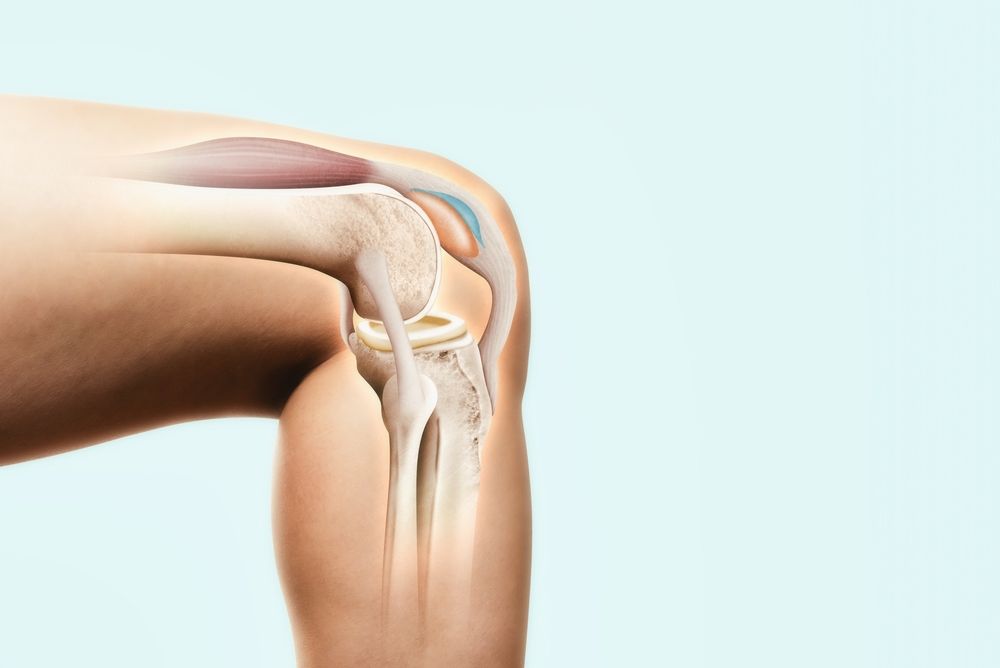Anatomy
The knee joint is made up of three bones, the femur (thigh bone), tibia (shin bone) and patella (knee cap). Between the femur and tibia are the medial and lateral meniscus, which act like a shock absorber or cushion. Articular cartilage covers the ends of the bones. This is a smooth, slick white surface. When it starts to thin down and wear away, sometimes exposing the bone underneath, this is called arthritis. Ligaments hold the bones together and tendons attach muscles to bone.
Procedure
Knee arthroscopy is an outpatient surgical procedure where two small incisions (each one about the size of a fingernail) are made on the front of your knee. A small camera is placed in your knee and the entire joint is thoroughly examined. Tiny instruments are used to clean up or repair damaged cartilage. At the end of the surgery, the incisions are closed with absorbable suture and numbing medicine is placed in your knee. A sterile gauze dressing is applied and covered with an ace wrap. Surgery generally takes about a half hour. The anesthesiologist wakes you up and takes you to the recovery room. You are there for about an hour while specially trained nurses monitor you and then you are discharged home.
After surgery
You will be given very specific, written, postoperative instructions regarding how much weight you can place on your knee, wound care instructions, etc. A responsible adult needs to stay with you for the first 24 hours after surgery. The following instructions can be used as a guideline; however your specific instructions may vary. Typically, patients can put as much weight on their leg as they can tolerate. Most people use crutches for the first two or three days after surgery. Try and elevate your knee higher than your heart as often as you can for the first 48 hours. Ice bags can be used for 20 minutes every two hours while awake. If you have a cooling unit, you will receive more specific instructions from the supplier. You will keep your dressing clean, dry and intact for three days. Then, remove the entire dressing except for the steri-strips (butterfly Band-Aids) that cover the incision. You can shower once the dressing is removed. Place waterproof Band-Aids over the incisions or cover them with several layers of saran wrap. Do not soak your knee in a bathtub, hot tub, swimming pool, etc. for three-four weeks. Do not scrub the incisions. Physical therapy will start a few days after surgery and you will attend two times a week for four weeks. We see you back one week after surgery for your first post op visit. We will check your incisions and discuss the results of surgery at that time.
Risks of surgery
Surgery, just like everything else in life, has risks. The main risks with knee arthroscopy are:
- Anesthesia- you will discuss anesthetic options with your anesthesiologist prior to surgery.
- Infection – you will receive a dose of antibiotics right before surgery starts. You shouldn’t need antibiotic pills after surgery.
- Bleeding/nerve injury – these are rare with arthroscopic surgery since the major arteries, veins and nerves are away from where we are operating.
- Blood clots – there is a rare chance of this in healthy patients, with no history of blood clots. If you have a family history of clots, let your surgeon know. Signs of clots to watch for include calf pain, swelling, and/or tenderness. If these occur, call our office and we will obtain an ultrasound. To prevent these, you will be placed on 81 mg aspirin twice a day for 10 days and provided with compression stocking you wear for one week.
- Stiffness – possible after any joint surgery. We start physical therapy two-three days after surgery to prevent this.
- Continued pain – this is possible if there is an injury to the smooth gliding surface (articular cartilage) of the knee. Injuries of this type are essentially arthritis, which typically progress over time.
Medicines
Pain – At your pre-op visit, you will receive a prescription for narcotic pain medicine for use after surgery. It is a short acting medicine that lasts about four hours. It is important to stay ahead of your pain, particularly in the first 24-48 hours. It is OK to take these, even if you are still numb from surgery because you will want pain medicine in your system as the block wears off. Over the next few days, as your pain is decreasing, you may taper off of your narcotic pain medicine. You may taper your short acting medicine by decreasing the number of pills you are taking at a time, or increasing the amount of time between doses. If itching occurs, you can try over the counter Benadryl. This can also be used at bedtime if you have trouble sleeping. Anti-inflammatory medicine, such as Advil or Aleve can be used as well, unless you are specifically instructed not to use them by your doctor.
Constipation – Narcotics can cause constipation so you may use an over-the-counter stool softener from your pharmacy. If this is not effective, we typically have you add Miralax.
Nausea – Pain medicine, and sometimes the anesthetic medicines used during surgery can cause nausea. Taking your pain medicine with food will help prevent nausea. For convenience, a prescription for an anti-nausea medicine will be provided as well. We recommend you fill it. However if you are not having nausea or vomiting, you do not need to take it.

